Elite Camp is a 3-day traffic and (mainly) conversion event. It’s among the very best CRO events in the world, and of course in Europe. This year was already its 7th year – and the format has proven to be so successful that the event has been replicated in many other countries.
Elite Camp 2016 had an enviable line-up of heavy hitters and rock stars. Here are top insights from every speaker of this year’s event.
Day 1
Paul Rouke – Opening keynote: Tackling the Global Pandemic That is Bullshit Optimisation
- Everyone should strive to join the #GrowthLeaders movement, someone leading change at whatever level they can exert influence. Public speaking is a great way to do this, but not the only way.
- Let’s reinvent the HiPPO (Highest paid person’s opinion). Now, it should stand for:
- Humility
- Integrity
- Passion
- Positivity
- Openness
- Don’t get swayed by imposter syndrome. Share your work.
- Have someone close to you that believes in you more than you believe in yourself.
- Be ambitious and don’t let other people hold you back.
Karl Gilis – How to Make Sure Your New Website Won’t Be a Failure?
- Redesigns aren’t always a bad idea, but redesigns without user research = gambling
- Many times redesigns are just cosmetic surgery (It’s like when someone has spoiled milk, but tries putting it into a new glass to solve the problem. Doesn’t work).
- AGConsult follows a specific approach to help their clients
- User research (Find ‘real’ users!)
- Strategy & Roadmap
- Structure
- Mockups
- People always try to argue with the user feedback strategy by quoting Henry Ford, ““If I had asked people what they wanted, they would have said faster horses.” But he never actually said that. The quote first surfaced in 2002.
- Either way, user feedback is not about asking your customers how to solve problems. That’s your job. You just need to pay attention to what users actually do (how they interact with their site, what they’re frustrated with, etc.)
- Stop selling the way you want to sell, sell the way people want to buy.
- If you don’t care about words, you’re a decorator, not a designer
Karsten Lund – Master the Moment of Decision Using Applied Neuroscience Methods for Measuring Attention, Emotion & Memory
- Three key factors in determining decision quality:
- attention
- emotions
- memory
- Measure emotion with a combination of eye tracking and brain tracking (EEG). Can also use predictive attention tools, though they tend not to be as accurate.
- Emotional impact + connection to brand = success (or why The Force commercial worked better than Baby and Me)
- Unconscious factors influence the way users pay attention on visual information provided (colors, schemes and details (Godzilla for example))
- Compared to earlier tv-branding campaigns today, memory allocation is scattered across multiple devices and activities at a time.
Amy Harrisson – The Science of Screenwriting for Online Marketers and Copywriters
- Copywriting is almost like scriptwriting, in that there are a few basic plots being used, but the context is always unique. (7 Basic Plots on Wikipedia)
- Use mini-stories describing your product/service instead of (empty) umbrella terms that everyone else uses. “Umbrella terms” are when you aggregate multiple features and benefits under one vague term, like “powerful” or “easy-to-use.”
- Make sure that your copy has the ‘Movie Trailer Effect’ – don’t bury the lede.
- Three techniques to write better copy:
- Surveys – learn customers’ challenges and questions via surveys.
- Symptoms – which symptoms does your product solve? (Check out the 7 symptom prompts below)
- Spying – spy on customers by putting yourself in their shoes.
- Use these 7 symptom prompts:
- location
- people
- emotions
- performance
- time
- money
- physical
André Morys – The Growth Canvas: What You Should Really Copy from Amazon
- ‘Profit is a result of user motivation.’ The impact of rising the user motivation is higher than reducing friction.
- Most of the time companies invest in traffic, sites, analytics, but not user research to find out about the the true/implicit motivation of their customers (reasonable would be at least 85%/15%).
- When changing your website you should ask yourself three simple questions:
- Will your change need to be perceived?
- Is the change you make relevant for your customer (implicit goals)?
- Can the change alter customer behavior?
- Build a business case around conversion optimization. Which benefits will your optimization provide (also in financial terms)? Easy to do this on a spreadsheet.
- Check out the Growth Canvas and the full list of cognitive biases (for coming up with psycho-growth-hacks).
- Iridion – Optimization Workflow Management for free.
Annemarie Klaassen & Tom van de Berg – Moving Beyond Testing for Absolute Truths
- Three tactics to maximize revenue from a CRO program:
- Free test software. Use free test software to minimize the cost of A/B testing (A/B Testing with Google Tag Manager)
- Change of statistics. The t-test (most used) is too focused on finding proof and taking as little risk as possible. Annemarie and Tom recommend using Bayesian statistics – that way, the statistical terminology is easier to understand in a business sense and you can do a better risk assessment of implementing the variation (read more on: ondi.me/change)
- Change of test method. Limit the regret of showing the least performing variation to 50% of your visitors by using bandit algorithms. Basically, they shift towards serving the winning variation more often and in real time, so you can start ‘exploiting’ the winnings earlier (and make more money). They’re best used when:
- You have very limited test period (holiday/promotion). The winner may not be applicable anyway (after the promotional period), so learning isn’t as valuable as just exploiting the winning variant.
- You face very high seasonality: run a bandit continuously and remove/add variations all the time
- You don’t care as much about the learnings, but are focused on earning
- Find out more about Bayesian A/B Test calculation and Bandit Testing.
Marie Polli – Taking Your Customers on a Journey That Matches Their Expectations
- Optimization best practices often don’t work for your specific website.
- Users are more disappointed when their online expectations aren’t met, because the baseline customer journey experience online is generally pretty good.
- Analyze your website along 5 major funnel elements:
- Homepage / Landing Page (value proposition & accessibility of content)
- Category Page (categories & filters)
- Product Page (Option to buy, product information, cross-selling)
- Shopping Cart (clear or modify the order & see payment options)
- Checkout (clear UX and limited, specific information)
- Websites contain multiple journeys. Make sure that you offer a specific journey to new and returning customers.
Peep Laja – Fresh Out of The Oven
- Conversion research revolves around one major question: How can we know which changes will be effective?
- ‘Conversion magic’ does not work anymore, you need a structured process to optimization:
- Where are the problems?
- What about it is the problem?
- Why is it a problem?
- How big is the problem?
- Prioritizing tests and instant fixes.
- Possible tests and fixes could be
- You can do your own conversion research, but you can also speed up the process by original research on CXL Institute (or in academic journals if you’re a masochist with a lot of free time):
- Do you need to drive attention to an element on the Website? Eye-tracking research helps with these insights.
- Some findings from CXL Institute were presented:
- Add relevant and familiar trust symbols. Logos from prominent companies mattered more than those from non-prominent companies.
- Present your value proposition appropriately.
- Display pricing plans in the right manner.
- first two plans get the most attention
- most expensive plans get more attention on the left
- more people chose expensive when listed first
- Female voice-overs were considered more trust-worthy than males. The lowest score for trustworthiness was the non-professional voice actor male voice (mine, if you were wondering).
- Add images to testimonials to increase memorability.
Day 2
Nilan Peiris – Product == People
- Evangelism is the biggest driver of growth for TransferWise (60% of last month’s customers came in through friends and recommendations).
- Recommendations are made for Products (Speed, Convenience, Price & Coverage) and Emotions (Brand & Culture).
- TransferWise created a culture around their product by a ‘manifesto mail’ that changed brand perception.
- The most important measure at TransferWise is the net promoter score.
- 3 Growth hacks for early stage startups:
- Find your scaling lever (HouseTrip, Facebook).
- Build acquisition into your product (LinkedIn, TransferWise).
- Use marketing to amplify your product.
Stacey MacNaught – Nobody Pays the Bills in “Social Shares” – Content Marketing That Delivers Tangible Value
- Investment in content marketing has gone through the roof in recent years and so have the expectations of success. The aim nowadays should be to create great content that directly converts into sales.
- Use PPC to promote content cost effectively (choose keywords nobody’s bidding on)
- Don’t expect conversions directly, and don’t expect people to just remember you when they are ready to convert. Retarget and measure!
- Report tangibly and make content marketing comparable to direct marketing channels.
- Need Keywords? Alternative to Google Keyword Planner at keywordtool.io
- Need content ideas?
- Ask the Seeker at AnswerThePublic
- Get ideas from FAQs at WebpageFX’s faqfox
- Ask your call center team!
Phil Nottingham – CRO with Video: Tips, Tricks and Tactics
4 things to split test with video:
- Video vs. No Video
- Usually converts well:
- Teaching video
- Live action explainer video (not only screencast)
- Personalized sales message
- Doesn’t usually work well:
- Culture video
- Animated explainer
- Customer testimonial videos (if too ‘staged’)
- Usually converts well:
- Placement vs. Display
- play rate drops the further it is down the page
- 410-600px is the most played video width
- play rate for videos longer than 300 seconds length is longest
- 35% increase in play rate when using a custom thumbnail (It’s like a movie poster)
- Content
- Divide by parts: Nose, Body, Tail
- Nose 2% – Impress quickly.
- Body 96% – Chunk it into sections and use music for momentum.
- Tail 2% – Be aware of the ‘Peak-end’ rule, so wrap up the video well.
- Divide by parts: Nose, Body, Tail
- In-Stream Action
- Use Turnstiles to collect information (best >300 sec video length and positioned in the middle 5-20%)
- Use Annotations with ‘Click Here’
- Employ CTA, especially with short videos from 30-60 seconds
Johnathan Dane – The PPC Thermometer – Why You Should Care About Ice Cubes & Lava
- All PPC channels will work for you if you stop using brute force.
- Your offers need to match your PPC Channel Temperature and you constantly try heating it up.
- Cold Visitors don’t know you or your offers.
- Warm Visitors know what they want, but don’t necessarily know you/your product.
- Hot Visitors know your company and your offer.
- Follow the ‘Chuck Norris PPC Cycle‘ (Awareness, Consideration, Action) when working on your channel.
- Use an explanation page (with an offer) displaying the benefits of your service.
- Match the cycle stage of your visitor by using multi-intent keywords.
- Do ‘Backend Plumbing’ in order to increase your channel/visitor awareness and consider different micro-conversion paths.
Mogens Møller – How To Compete Against The Big Ones (Zalando, IKEA etc) in the World of E-commerce
- Be aware of your USPs and transfer them to your online business to differentiate from the ‘big’ competitors.
- Don’t be a stupid order receiver (as most e-commerce websites are).
- Don’t copy competitors’ case studies; be inspired by principles.
- Know your customers! Create personas and make them using real data (don’t fall into the stock photo trap).
- Try to create No-Brainers. Make decisions as easy as possible (e.g. visualization of products)
- Think about your process. Three easy ways to improve it are:
- Auto-emails after new order with questions relevant for you and your business.
- Telephone interviews with customers (at least every quarter).
- Do user-tests at least every half year.
- Check out this video of GA at a real-life checkout; it’s hilarious.
Martijn Scheijbeler – Optimization for Content Sites
- As a publisher, content doesn’t make you very much money (with ads at least), so:
- Think about additional revenue streams.
- Think about cost <> efficiency tradeoffs.
- Collect additional data:
- Work on the Data Layer, get all relevant data out of it!
- Create Custom Dimensions (Ads Loaded/Not Loaded, Words, Comments)
- Create Calculated Metrics (CLV, CPS, Non-Bounce, CAC)
- Use Event Tracking (Scrolling Depth, Time on Page)
- Enhanced E-Commerce
- Some ideas for A/B testing in publishing:
- Order of share buttons
- Number of related stories
- Removing a sidebar (didn’t work for TNW)
- There are 5 Principles for A/B Testing at TNW:
- Know what you’re testing
- Focus on your user segments
- Iterate on what you are already testing
- Focus on high significance
- Test big, bigger, biggest
- Check out the GTM Container of TNW
Chris Mercer – How Top Marketers Are Using Google Tag Manager To Improve their Sales & Leads
Mercer presented the best ways to use GTM like a top marketer:
- Use built-in tags as often as possible.
- Use “Cross Domain” Tracking (it’s built into GTM with Auto-Link).
- Automatically track every click to see what works.
- Use Timers to adjust the bounce rate or increase remarketing quality.
- Customize the Data Layer and let it tell your story.
Yehoshua Coren – Strategic And Tactical Implementation And Analysis Techniques
- It’s not enough to just gather data in Google Analytics. You have to ask meaningful questions.
- Create custom reports in Google Analytics using metrics & dimensions to create (horizontal) funnels and micro-conversions.
- Custom Metrics can be used as events (AKA tracking on steroids) and they should be for your 10-15 top events.
- Formulate your hypotheses and define resulting actions:
- I believe [X].
- If I am right, then I will take a [Y] specific action.
- Make sure you understand your content segmentation and observe longitudinally.
- Don’t get caught in the ‘session only’ default settings of Google Analytics. Connect it to goals and create session scoring.
- Use two-tiered segmentation.
- A smart data layer leads to smart business decisions. Know who’s on your site and what the user intends to do.
Andrus Purde – From Hand to Hand Combat to a Bond Villain – How You Evolve as a Marketer
- Pipedrive created the Pipeline Academy courses to make users talk about them and engage with their company.
- Homepage CRO is useful, but it’s not a silver bullet for growth.
- Geo-targeting elements such as targeted testimonials worked well on the Pipedrive website.
- The Pipedrive marketing templ(at)e:
- Foundation: analytics, user insights, product marketing, brand and website
- Pillars: Content/SEO, Paid, Growth engineering, Referrals
- Top: life-cycle management
- Mobilize your whole organization to be successful at all areas of marketing: Growth = People + Processes
David Arnoux – From Street Musician to Rockstar: How We Train the Next-gen of Growth Rockstars
6 low hanging-fruits to achieve growth:
- Be quick to explain your product/service. Don’t take more than 5 seconds.
- You need traffic for A/B tests – Go big or go home!
- Don’t optimize your landing page, optimize your retention – look at early samples to do so.
- Optimize for the ‘Wow-Moment’ at the beginning of your retention curve – if you don’t know it:
- Flip the funnel – move the wow-moment in front of the actual conversion (examples: Stripe, Wealthfront)
- Engineering as Marketing – engage the user and let them know what they need! (examples: website graders, calculators, app vs. website)
Day 3
Thomas Barker – From Zero to In-House Optimisation Superstars
- Culture is one of the deciding factors that makes a company successful.
- Four steps that got RBS back on track with their analytics and optimization:
- Gain Control and Insights (hiring Journey Managers/CMS)
- Implement Tag Management
- Democratize the data – your company isn’t data-driven if only the data scientists know what’s going on
- There are 110 live-data dashboards at RBS
- Help answer the why by creating and testing hypotheses
- Create a nucleus of experts and spread knowledge via internal trainings.
- Getting executive buy-in is important.
- Understand the goals of your executives and involve them in running the tests (even just by letting them push the start-button)
- Don’t hide away:
- Gather ideas and involve all areas and lines of business, but be ruthless when prioritizing and selecting tests.
- Share results and insights with the whole company.
Craig Sullivan – Summary session
- The tools, knowledge, and techniques have all improved, but the foundation of conversion optimization remains a difficult job.
- Humility and ignorance help you get to better results. You can’t and don’t know everything! Develop a ‘better quality’ ignorance.
- Stop reading best practice bullshit. It’s never 1:1 advice; never applicable to everyone the same way.
- Build your optimization on a good foundation of data. Get a health check!
- Work on your organizational design and culture. Get both ready for scalable growth.
- Embrace failure – it’s an integral part of conversion optimization.
- Mature your metrics. Focus on retainment, satisfaction and customer lifetime value rather than short-term events-
- Prioritize. There is no “best method,” but one of them will be the right one for you.
- Use quantitative and qualitative methods. You know the whole solution only using one of them.
- Usability vs. motivation – It’s good to work on both, but it doesn’t solve stuff that is simply broken.
- Implement a process. Tools and knowledge are a good start, but not enough. Find a way of working that fits your team.
- You MUST have copywriting, persuasion and psychology available to CRO teams.
- Do cross-device optimization (XDO) – best by using a CRO Grid. Not many companies and agencies do it yet.
- “Growth isn’t a strategy, it’s a result.”
- Alpha version of ProfitGrid is live, check it out!
Conclusion
Elite Camp was an all-around amazing event – quality networking, cutting-edge learning, and a great resort. Come next year!
Also, sign up for updates about next year’s CXL Live.
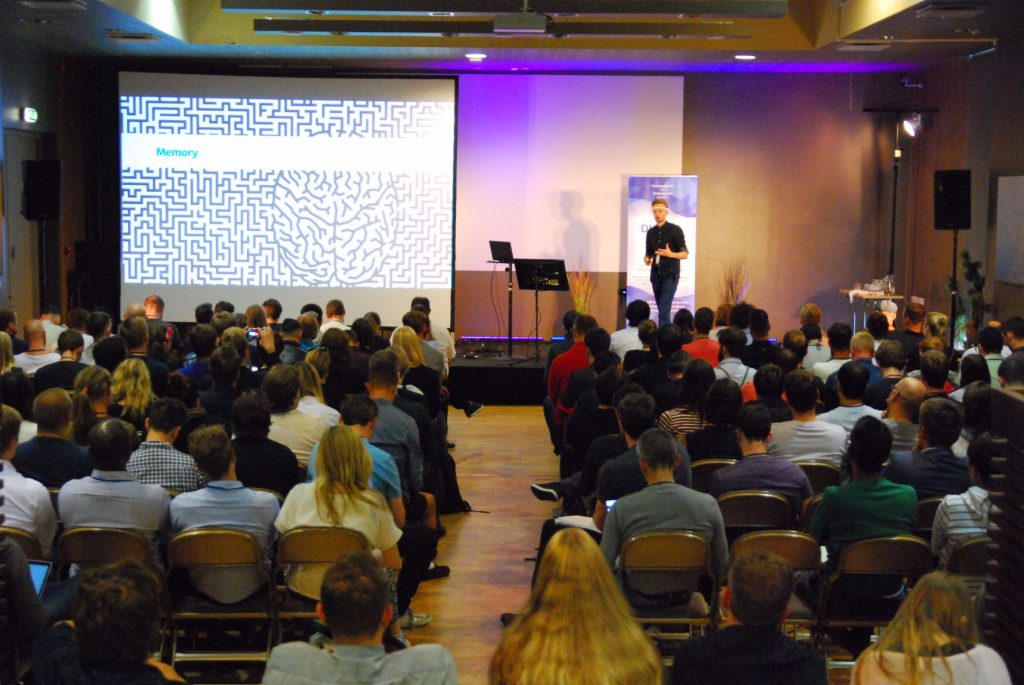

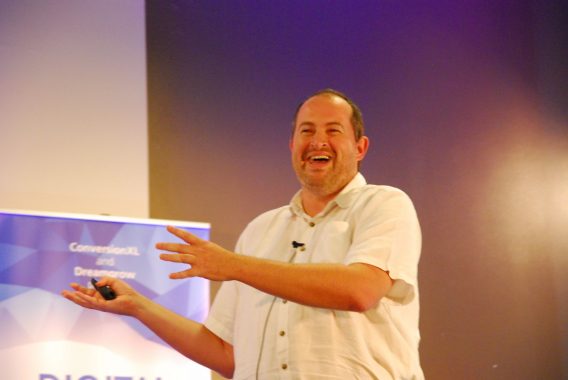

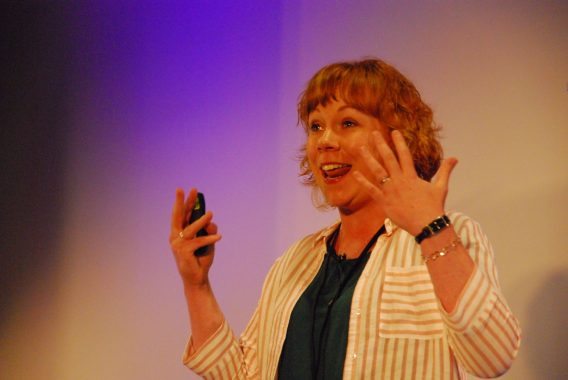



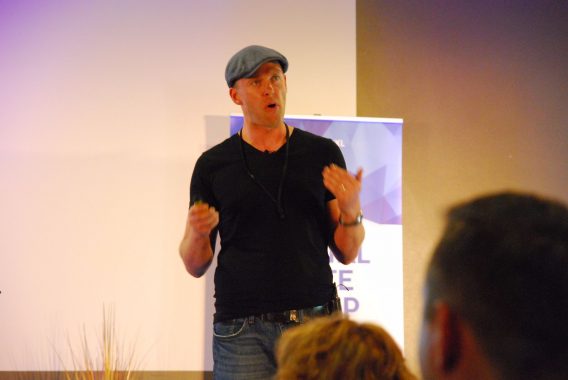
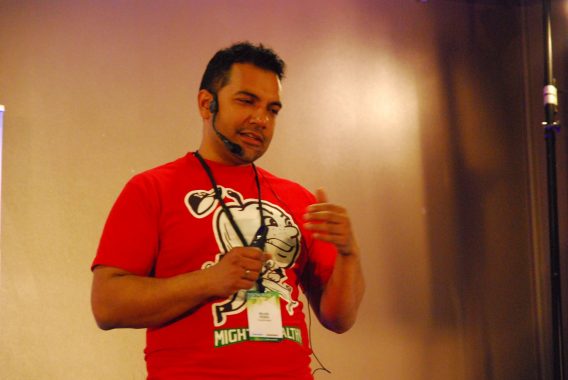

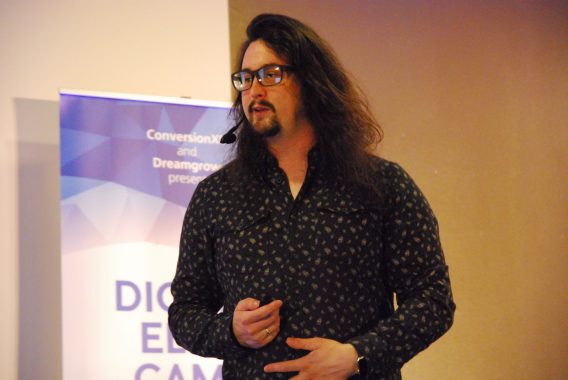

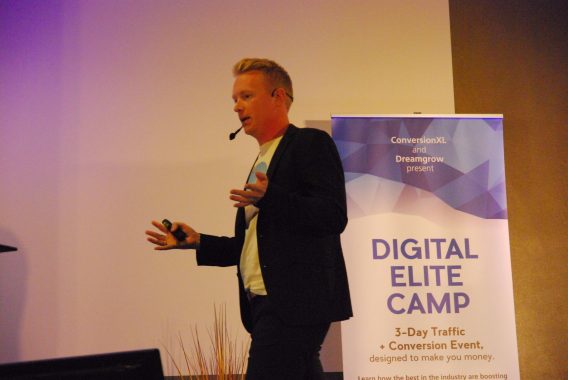
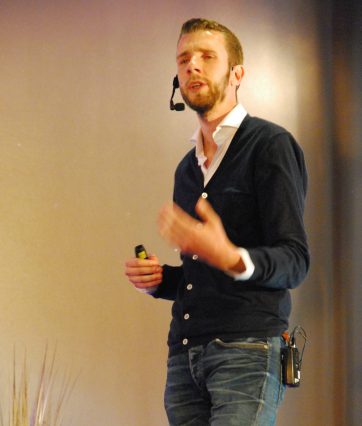
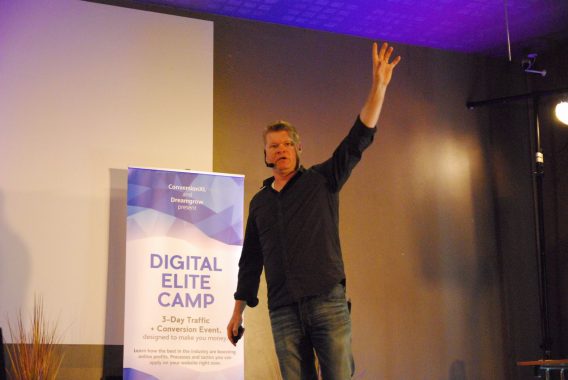

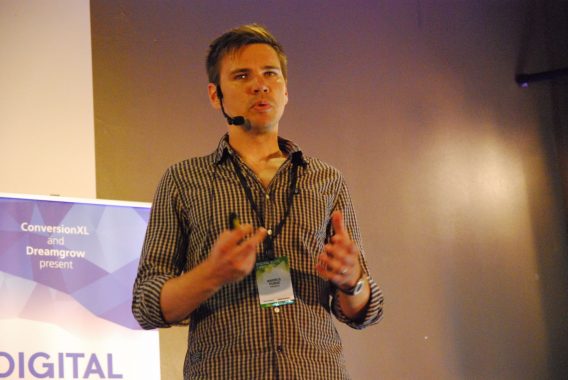
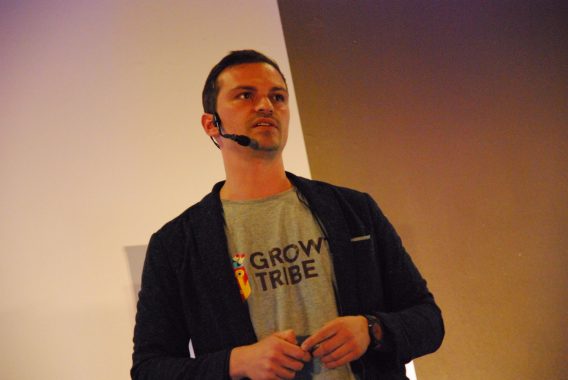

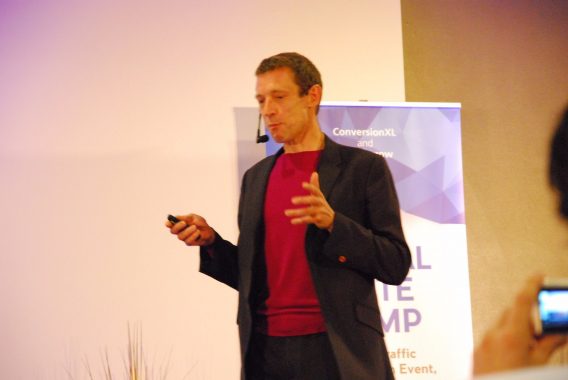




What a genuine pleasure it was for me to be invited by Peep to provide the opening keynote at this years Elite Camp. My prediction during my talk that “over the next 3 days we are all going to learning things which the majority of the digital industry will only be thinking about in about 5 years” was absolutely spot on.
Thanks to all the speakers and attendees for making this such a memorable 3 days for me.